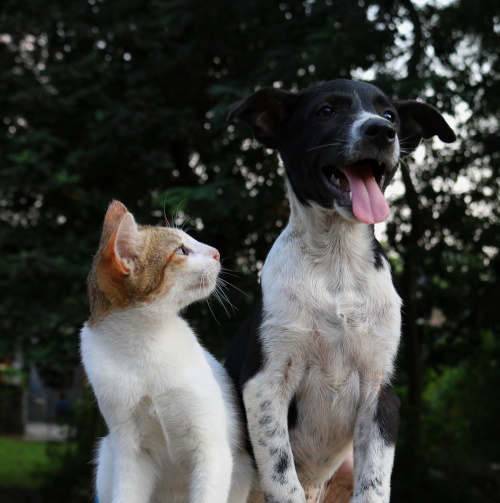 As many as 84.9 million households own a pet in the U.S. Dogs are the most popular pet for Americans, and it’s not surprising given that dogs make fantastic companions. While adopting a new pet is an exciting time for the family, many people feel nervous about introducing their new pup to their other pets — but this shouldn’t stop you from offering a loving forever home to a shelter dog. With a little time and a lot of patience and love, you can help your new dog become good friends with your other four-legged family members.
As many as 84.9 million households own a pet in the U.S. Dogs are the most popular pet for Americans, and it’s not surprising given that dogs make fantastic companions. While adopting a new pet is an exciting time for the family, many people feel nervous about introducing their new pup to their other pets — but this shouldn’t stop you from offering a loving forever home to a shelter dog. With a little time and a lot of patience and love, you can help your new dog become good friends with your other four-legged family members.
Supervise Pet Introductions Closely
While your new dog or existing pets may have previously lived with other animals, you can’t always predict how they will react to meeting a new four-legged sibling. When you begin introducing your new pup to your existing pets, you need to keep a close eye. Pets communicate by using body language, just like us humans. If the animals are relaxed with their tails in a wagging in a playful position, then it’s all positive. But if the dog growls, tenses their muscles or takes a defense posture, you should separate the animals for a period of time.
Remember Your Smaller Pets
While your initial focus may be on ensuring smooth introductions between your new dog and your existing dog or cat, don’t forget your smaller pets. At least 142 million freshwater fish are kept as pets so it’s common for a household to have both a dog and fish. You will need to make sure that your new pup understands how to behave around your fish tank or hamster, rabbit or birdcage. Give your new pup a chance to sniff it to satisfy their curiosity. Chances are, this will be enough and they won’t be too interested after that.
Still, it’s best to keep cages or fish tanks well out of the way. Even very heavy tanks can be broken or knocked over by a dog so make sure it’s on a stable surface well out of reach. It’s also important to keep your new dog well away when it’s time to clean out your fish tank, bird or hamster cage. They can inadvertently hurt your smaller pets or themselves if they digest any of the tank cleaning products or accessories, even if they are eco-friendly, or manage to eat a raw fish.
Set The Tone For Positive Pet Behavior
If you are nervous at all about introducing your pets or taken by surprise at their negative reactions then the animals will pick up on it. Keep a positive tone to the introductions and ensure your body language doesn’t give you away. If things get too much for either the animals or you then simply separate the pets and try again later. The tone of your voice can also have a huge impact on how your other pets initially get along with your new dog. Keep your tone happy and positive and use positive commands. Reward all your pets for good behavior with lots of praise and some healthy treats.
Getting a new dog is a very exciting time for you and your family, but your other pets may not be too sure about their new canine sibling, so make sure you take your time with introducing your new dog to the rest of your pet family.
Article by: Jane Anderson, a freelance writer, editor and dog owner
Photo by Anusha Barwa on Unsplash